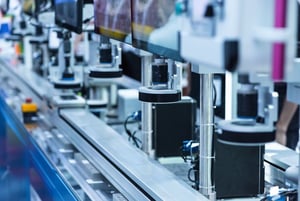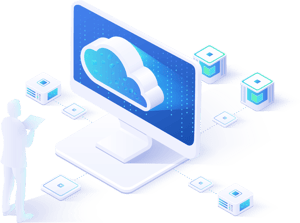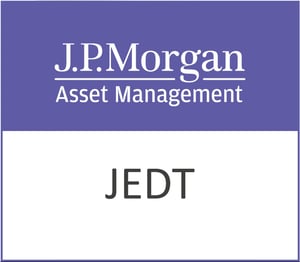TalkTalk Telecom Group PLC (LON: TALK) have provided results for the half year to 30th September 2019.
| Metric | H1 FY20IFRS 16 1 | H1 FY20Pre-IFRS 16 1 | H1 FY19Pre-IFRS 16 1 |
| Headline 2 revenue (ex-Carrier and Off-net) | £764m | £764m | £771m |
| Statutory revenue | £792m | £792m | £822m |
| Headline 2 EBITDA | £140m | £115m | £101m |
| Statutory operating profit | £29m | £28m | £19m |
| Statutory profit before taxation | £1m | £4m | (£4m) |
| Net Debt 3 | £1,041m | £830m | £760m |
| Fibre Net Adds | 292k | 292k | 192k |
| On-net ARPU | £24.49 | £24.49 | £25.01 |
| On-net churn | 1.27% | 1.27% | 1.20% |
Tristia Harrison, Chief Executive of TalkTalk, commented:
“We’re pleased that our clear strategy to accelerate customer growth in Fibre broadband while also reducing costs has led to a significant increase in profitability in the first half, with a 14% year-on-year increase in like-for-like 4 EBITDA. We now have over two million customers taking a Fibre product, adding nearly 300,000 customers in the half.
Fibre broadband is good news for customers and TalkTalk. It offers a faster, more reliable service whilst also reducing churn and comes with a materially lower cost to serve. In addition, our soon to be completed HQ move and shift to a self-service model is underpinning our cost reductions.
Our Headline EBITDA outlook for the year remains unchanged.”
Highlights
• Fibre net adds up 52% to 292k, including a record 174k in Q2 (Q2 FY19: 125k), accounting for 33% share of all new Openreach Fibre to the Cabinet (FTTC) lines in Q2 (H1 FY19: 22%)
• Headline revenue (ex-Carrier and Off-net) and On-net ARPU down 0.9% and 2.1% respectively, largely due to lower Voice usage and call boost revenue across Consumer and B2B. We also accelerated the re-contracting of our remaining higher ARPU legacy Copper customers onto a Fixed Low Price Plan (FLPP), ahead of regulatory and industry commitments on out of contract pricing, increasing our in-contract base to 72% (Q4 FY19: 68%). Headline revenue decrease was offset in part by increased Fibre penetration
• Statutory revenue contracted by 3.6% mainly due to exiting MVNO operations and declining Carrier revenue
• Headline EBITDA (pre-IFRS 16) represents 13.9% growth with increased Fibre penetration and HQ move efficiencies driving a materially lower cost base
• Statutory operating profit improvement reflects the Headline EBITDA growth
• Headline EBITDA outlook for the year (pre-IFRS 16) remains unchanged
• Increase in net debt (pre-IFRS 16) driven by working capital outflows due to a change in distribution model and accelerated Fibre growth, the cash cost of our HQ move and continued investment in FibreNation
FibreNation
• Ongoing advanced negotiations with interested parties regarding its FibreNation business
1 IFRS 16 has been applied using the modified retrospective approach. Accordingly, the comparative information has not been restated, with FY20 results presented both including and excluding IFRS 16 to allow users to see how the results have moved period on period. This alternative performance measure (APM) will be presented for one year only until the comparatives also include the adoption of IFRS 16. See note 2 for more information.
2 See note 2 for an explanation of APMs and non-Headline items. See note 7 for a reconciliation of Statutory information to Headline information.
3 Total net debt includes £211m lease liability, following adoption of IFRS 16 (see note 2), of which £36m relates to finance leases (H1 FY19: £40m finance leases).
4 Like-for-like EBITDA is referring to Headline EBITDA on a pre-IFRS 16 basis
H1 FY20 financial results 1,2
Headline revenue (excluding Carrier and Off-net) contracted by 0.9%. Ongoing Voice decline was partly offset during the period by a continued strong increase in Fibre penetration. Headline EBITDA increased to £140m. Prior to the adoption of IFRS 16 Headline EBITDA grew 13.9% to £115m (H1 FY19: £101m) reflecting the continued focus on reducing the cost base of the business. Our Statutory profit before tax of £1m (H1 FY19: £4m loss) includes non-Headline items of £14m (H1 FY19: £10m). The Board has recommended an interim dividend of 1.00p (H1 FY19: 1.00p) in line with our previously stated dividend policy.
Q2 trading – increasing momentum in Fibre base growth and penetration 1,2,5
Q2 saw a marked acceleration in Fibre growth, with a record 174k net adds across Consumer and B2B in the quarter (previous record was 152k in Q4 FY19), taking 33% share of new Openreach FTTC lines (Q2 FY19: 22%). This was a significant step up from Q1 (118k) and was driven in part by 79% of new Consumer customers taking a Fibre product in the period (Q2 FY19: 54%), peaking at 81% in September. Equally encouraging is the volume of customers taking our higher speed services, with 23% of the Consumer Fibre base now taking our 80mbps product (Q2 FY19: 17%).
Growth in Fibre net adds was not only within the Consumer division, as our B2B arm also delivered its strongest ever quarter of Fibre net adds, with the majority of new wholesale partner customers taking a Fibre product, including an increasing mix of customers taking 80mbps speeds. The trend is mirrored in our Data business, where we added 1.1k to the Ethernet base, taking the overall base to 39.4k (Q2 FY19: 34.9k), with 37% of Ethernet orders now for our 1Gb lines (Q2 FY19: 18%), which come with materially higher ARPU and lower churn.
With Copper fast becoming a legacy product, shifting our focus to Fibre is the right thing for TalkTalk and our customers. Fibre customers benefit from faster, more reliable connectivity, whilst for us these customers are accretive to customer lifetime value (CLV) with lower churn and cost to serve, as well as higher ARPU compared to Copper customers (with the exception of some legacy Copper customers with call and TV boosts). Our focus on Fibre and our CLV approach to base management has seen a number of legacy Copper customers opt to leave TalkTalk, meaning On-net churn has risen year-on-year to 1.26% (Q2 FY19: 1.11%).
This active decision to target our remaining higher ARPU legacy Copper customers to re-contract onto FLPPs, ahead of regulatory and industry commitments on out of contract pricing, has led to some further ARPU dilution in the period. This combined with overall legacy Copper broadband base decline, and Voice usage and boost drags in both Consumer and B2B has seen Q2 Headline revenues excluding Carrier (£9m) and Off-net (£2m) fall year on year by 3.1% to £377m. Q2 On-net revenues were also down 3.1% to £310m, whilst Data was flat at £43m and Voice was down 7.7% to £24m. As a result, Q2 On-net ARPU is down 3.6% year on year to £24.29 (Q2 FY19: £25.21), with lower Voice usage and call boost take-up, combined with legacy base re-contracting being the primary driver of this.
However, as Fibre penetration continues to increase and our FLPPs continue to resonate well with Consumer customers, with 72% (Q2 FY19: 69%) of the base now in-contract, benefitting from price-certainty for the duration of their contract, we expect to see churn trend down and ARPU stabilise again in the second half and beyond.
Outlook
Headline EBITDA outlook for the year (pre-IFRS 16) remains unchanged, with increased Fibre penetration and HQ move efficiencies driving a materially lower cost base.
1 IFRS 16 has been applied using the modified retrospective approach. Accordingly, the comparative information has not been restated, with FY20 results presented both including and excluding IFRS 16 to allow users to see how the results have moved period on period. This alternative performance measure (APM) will be presented for one year only until the comparatives also include the adoption of IFRS 16. See note 2 for more information.
2 See note 2 for an explanation of APMs and non-Headline items. See note 7 for a reconciliation of Statutory information to Headline information.
5 Since EFM is a legacy product, we are no longer including EFM connections in our Data KPIs, and instead will report Ethernet only.
CEO review
Overview 1,2,4
It has now been two and a half years since we set out our strategy to be Britain’s leading value provider of core fixed connectivity. As we exit the first half of the year, our strategy remains unchanged, with our focus on providing our customers the best value for money connectivity, whilst radically simplifying TalkTalk to focus on fewer priorities as a leaner, more efficient business.
Data usage continues to increase exponentially (30% YoY), driven by video streaming, online gaming and cloud storage services. Consequently, the demand for affordable and reliable fixed connectivity continues to rise, as does the consumer demand for higher speed and more resilient broadband.
These market dynamics continue to validate our strategy to focus on fixed connectivity and to specifically narrow our focus on higher bandwidth Fibre broadband, as Copper fast becomes a legacy product. Crucially, alongside this, we are continuing to right-size our cost-base, as we remain resolutely focused on addressing our central costs. This strategy has led to a significant increase in profitability in the first half, with a 14% year-on-year increase in pre-IFRS 16 Headline EBITDA to £115m.
In an uncertain economic climate where price really matters, TalkTalk remains well positioned to benefit as the only scale, value provider.
Fibre for Everyone
TalkTalk has made strong progress throughout the half in converting standard broadband customers on legacy Copper connections to Fibre-to-the Cabinet (FTTC). These customers benefit from faster, more reliable connectivity, whilst for TalkTalk these customers come with a higher lifetime value. We now have over 50% of the total Consumer and B2B base taking a Fibre product. However, as customers continue to demand even faster, more reliable services, our long-term ambition is to transition all customers to new Fibre-to-the-Premises (FTTP) networks as quickly as possible.
Supporting this ambition, we created our ‘Fibre for Everyone’ programme. This is a cross-Group initiative where we will consume wholesale FTTP from Openreach, in an extension of our commercial wholesale FTTC agreement, FibreNation and other alternative network operators to provide future-proof connectivity to homes and businesses across the UK. In the first half of the year, we have been building the systems and capability to provide FTTP services and we are aiming to launch Openreach FTTP before the end of the calendar year. We are also getting ready to consume Single Order Generic Ethernet Access (SOGEA) at scale in the next year.
We continue to be well placed to succeed in this space. With multiple routes to market through TalkTalk Consumer, Business and Wholesale, as well as a significant existing base, we are one of the few scale operators able to offer significant volume commitments to network builders and drive commercial advantage.
Consumer
Our single-minded focus on Fibre continues to bear fruit as more customers are demanding faster, more reliable services. We saw another meaningful shift from legacy Copper to Fibre, as we delivered 292k Fibre net adds across the Group in the first half of FY20, making significant year-on-year progress (H1 FY19: 192k). Over 50% of our total base (Consumer and B2B) is now on a Fibre product, with the Fibre base now in excess of 2 million customers.
Our propositions continue to resonate with our Consumer base, with an ever-increasing proportion of new customers signing-up to a Fibre product. As we exited the half, 81% of new Consumer customers signed up to one of our higher speed products compared to 54% at the same stage 12 months ago. Of these new Fibre customers, 42% took our faster, higher ARPU 80mbps product (H1 FY19: 22%) and lower wholesale costs from Openreach means we can continue to migrate more of our base to these faster services more economically.
Continued investment in new, digital self-service tools has led to significant improvements in the customer experience. Our ‘My Service Centre’ tool allows customers to identify and resolve issues online without having to speak to an agent. This tool has now been rolled out to all of our Consumer base and combined with other self-service methods (e.g. text messaging and live chat), we are seeing a reduction in call volumes, fewer complaints and increased customer satisfaction, which is leading to lower costs to serve.
During the half, we have seen a slight increase in On-net churn to 1.27% (H1 FY19: 1.20%) and some ARPU dilution as we actively targeted our remaining higher ARPU legacy Copper customers to re-contract onto FLPPs, ahead of regulatory and industry commitments on out of contract pricing. As such, our in-contract base increased to 72% (Q4 FY19: 68%). We also made a number of commitments in September to improve our customers’ experience, including making it easier for new and existing customers to access the same deals from January 2020, as well as ensuring vulnerable customers are proactively moved to the best package for their needs. These pre-emptive actions leave us well positioned ahead of any further regulatory intervention on the ‘loyalty penalty’ paid by existing customers.
1 IFRS 16 has been applied using the modified retrospective approach. Accordingly, the comparative information has not been restated, with FY20 results presented both including and excluding IFRS 16 to allow users to see how the results have moved period on period. This alternative performance measure (APM) will be presented for one year only until the comparatives also include the adoption of IFRS 16. See note 2 for more information.
2 See note 2 for an explanation of APMs and non-Headline items. See note 7 for a reconciliation of Statutory information to Headline information.
TalkTalk Business 5
In the same way that our Consumer customers are demanding higher speed connections, our B2B clients are consuming more data too. As such, our strategy is consistent across both divisions, with the upgrade of customers to higher speed Fibre and Data products being the primary focus for both the indirect and Direct B2B business. As in the Consumer division, the majority of new customers in our indirect partner business are now joining on Fibre products, with 56% of gross additions taking Fibre in Q2 (Q2 FY19: 43%), leading to the highest ever quarterly net adds number in both B2B and the Group.
Throughout the half year we strategically locked in a number of our key Broadband and Ethernet partners with long-term commitment deals, adding 2.1k to the Ethernet base (H1 FY19: 2.9k), taking the overall base to 39.4k (H1 FY19: 34.9k). Within the mix, we saw over a third of orders for our 1Gb service (H1 FY19: 17%), so whilst overall Ethernet base growth has slowed year-on-year, this has been countered by a higher volume of 1Gb connections, which come with significantly higher ARPU and lower churn.
Given the success of ‘My Service Centre’ in the Consumer business, we have started to share our proprietary data with our partners to enable them to enhance their end-customer experience. Not only does this lead to happier, more content customers, this also strengthens our relationship with key partners, as we work together to provide the best possible service to customers.
To ensure we maximise the growth potential of our Direct B2B business, we structured it as a stand-alone business division in the prior year to ensure that it receives focus from its new dedicated management team, as we grow the business and continue to improve on the quality of service we provide our Direct customers. This renewed focus, coupled with some targeted investment, has seen the Direct business prosper, delivering record Fibre net adds.
Network and connectivity
Our strategy means that fixed connectivity remains our core investment priority as we continue to scale our network to meet and exceed rising demand for bandwidth (+30% YoY). Crucially, we are doing this more efficiently by exploiting new technology and industry changes along the way. Video streaming continues to dominate peak bandwidth consumption, contributing to our recent peak usage record of over 5tbps. To help manage this demand, we have successfully continued our strategy of storing (caching) content at the network edge to minimise buffering and optimise required network expansion. We now serve 89% of Netflix content at the network edge, and this combined with our continued transition to Fibre access technologies is reflected by our strong position in the Netflix ISP performance rankings for the UK.
Given our focus on core, fixed connectivity it is essential that our foundations are strong and that we are able to adapt to the changing needs of our customers, whilst continuing to scale. As such, we will continue to incur non-Headline items in relation to our multi-year network and IT transformation programme, which will fundamentally restructure the Group’s network, IT infrastructure and technology organisation. This programme is expected to run until 2021 and underpins the wider Group strategy ensuring that it is fit for the future.
Our continued use of network data to proactively diagnose connectivity issues, inform customers and recommend the right course of action to resolve remains at the heart of our consumer connectivity strategy and the second half of the year will see this move into the in-home environment at scale, unlocking the confused and often congested in-home environment through cloud-based data analytics and clear guidance to help customers improve and enjoy the connectivity we supply to the home.
5 Since EFM is a legacy product, we are no longer including EFM connections in our Data KPIs, and instead will report Ethernet only.
Cost reduction 2
Throughout the first half of the year we have continued our relentless drive to make TalkTalk a simpler, lower cost business, and this is now starting to materially feed through into the financials. Our focus on core connectivity has seen us continue to sell our non-core products, such as mobile and TV, in a capital light way. This Fibre-focused strategy, aided by our wholesale discount agreement with Openreach, has seen a big increase in the number of customers taking Fibre, meaning that a greater proportion of the base are benefitting from higher speed and more resilient connections. As a result, we are seeing fewer faults, engineer visits and calls into the call centre. In tandem with this, the full roll-out of ‘My Service Centre’ has seen more and more customers self-serving, further reducing calls to our contact centres, meaning we have incurred significantly lower costs to serve our customers year on year.
We have made excellent progress on the move of our HQ from London to Salford and have delivered £7m savings in the first half, with a further c.£10m expected in the second half, consistent with our guidance of £16m-£20m for the full year. Roughly half the associated non-Headline cash costs have now been incurred (c.£16m), with £29m recognised to date in the income statement. A small number of roles were transitioned at the end of March 2019, with the bulk moving at the end of September 2019, and the final tranche by the end of December 2019. As such the savings are weighted more towards the second half of the financial year, with the full annualised saving of £25m-£30m materialising from FY21 onwards. We are already seeing improved collaboration and a more agile culture, and believe there are further benefits to be had, particularly as we continue to undertake a rigorous review of all external spend now that the majority of the business is located in one place.
Finally, on costs, we have transitioned to a more targeted digital approach to marketing, which has enabled us to target customers with the right CLV profile. We have moved away from price comparison websites, as well as exiting a distribution agreement with a third party, as these routes to market were effective at driving volume, but customers came with lower CLVs and a higher propensity to churn. Enhanced by a new distribution relationship, a shift to digital channels has enabled us to bring down SAC and marketing costs year on year.
People
To continue delivering for our customers, we are intent on making sure we have the right resources and skills in place to focus on our mission of being the UK’s leading value for money fixed connectivity provider. Over the last 12 months, we have been working on transition plans as we move our HQ from London to Salford. As at the end of September 2019, nearly three quarters of our workforce (74%) are based in our Soapworks site in Salford Quays, which is 10% more than at end of FY19. The move has been a great success so far and increased collaboration has led to a 34-point improvement in internal engagement scores since November 2018. The transition will be completed by January 2020, at which point the vast majority of the workforce will be situated in our North West HQ, with a small presence maintained in a satellite office in London.
Outlook 1,2
Headline EBITDA outlook for the year (pre-IFRS 16) remains unchanged, with increased Fibre penetration and HQ move efficiencies driving a materially lower cost base.
1 IFRS 16 has been applied using the modified retrospective approach. Accordingly, the comparative information has not been restated, with FY20 results presented both including and excluding IFRS 16 to allow users to see how the results have moved period on period. This alternative performance measure (APM) will be presented for one year only until the comparatives also include the adoption of IFRS 16. See note 2 for more information.
2 See note 2 for an explanation of APMs and non-Headline items. See note 7 for a reconciliation of Statutory information to Headline information.









































